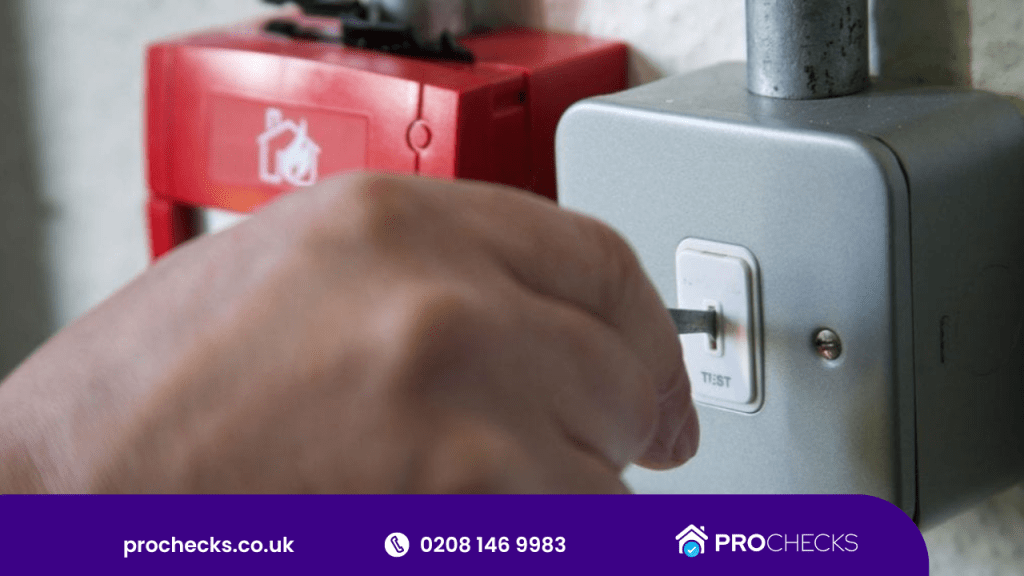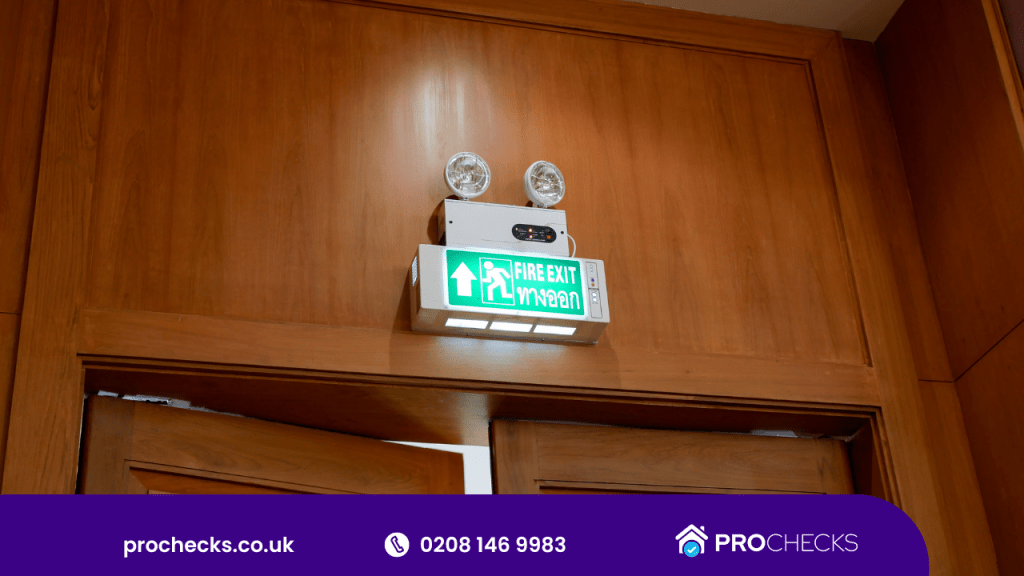Emergency lights are critical for building safety, guiding occupants to exits during power failures or emergencies. The standards governing their testing are stringent, requiring monthly and annual evaluations to ensure they operate effectively when needed. These tests not only involve a simple operational check but also extend to a detailed assessment of battery functionality and the adequacy of the light coverage. What remains less discussed, however, is the implication of these testing protocols on the overall safety management practices within organizations. How these routines integrate with broader safety systems could provide insights into enhancing emergency preparedness in various settings. Let’s understand the Requirements for Emergency Lights Testing?
Key Takeaways
- Emergency lights must undergo monthly short functional checks to ensure operational readiness.
- An annual, full three-hour operation test is required to verify battery endurance.
- Testing must comply with standards such as BS EN 50172:2004 and BS 5266 series.
- All tests and maintenance activities should be meticulously documented for compliance audits.
- Professional testing services are recommended to verify system integrity and compliance with regulations.
Importance of Emergency Lighting
Emergency lighting is a critical safety feature that activates automatically during a power outage, ensuring that illumination is maintained in essential areas, particularly along escape routes. The strategic deployment of emergency lighting facilitates safe and efficient evacuation, minimizing the risk of injury or worse during emergencies such as fires or natural disasters.

This system is not merely a convenience; it is a fundamental component of a building’s safety protocols, addressing the immediate visibility needs that arise during sudden darkness.
The benefits of emergency lighting extend beyond simple illumination. These systems are designed to operate independently of the primary power supply, utilizing batteries or generator-backed power sources, which ensures that lighting remains operational even if the primary circuit fails.
This redundancy is crucial in high-risk environments where timely evacuation is essential.
Moreover, adherence to emergency lighting regulations is not optional but a stringent legal requirement. Building owners and managers must comply with standards such as BS 5266:2016, which provides a framework for the installation and maintenance of emergency lighting systems.
Compliance not only meets legal obligations but also significantly enhances the safety of occupants by ensuring that emergency routes are always visibly marked and illuminated, thereby aiding in a calm and orderly evacuation.
Testing Frequency and Standards
Adherence to prescribed testing frequencies and standards is imperative for maintaining the effectiveness and reliability of emergency lighting systems. The regulatory landscape mandates that emergency lights undergo rigorous monthly and annual testing protocols to ensure they function optimally during power outages and emergencies.
Monthly tests typically involve a short functional test, while the annual test requires a full three-hour operation to verify the endurance of the battery and the functionality of the lighting unit under prolonged duress.
These standards are outlined in key regulations such as the BS EN 50172:2004 and the BS 5266 series. Compliance with these standards not only fulfills legal obligations but also safeguards occupants by ensuring a reliable source of illumination during emergencies.
However, compliance challenges often arise due to the technical nature of the testing procedures and the rigorous documentation required. Technicians must be thoroughly trained to execute these tests accurately, and building managers must maintain meticulous records to prove compliance.
To meet these rigorous standards, organizations should invest in regular training for their maintenance staff and consider the engagement of specialized testing services that can provide expertise and assurance in meeting compliance requirements.
Such proactive measures ensure that emergency lighting systems are compliant and fundamentally reliable when most needed.
Emergency Lighting Test Components
The effective testing of emergency lighting systems comprises several critical components that must be checked to ensure operational readiness and legal compliance. The primary focus involves assessing the hardware’s functionality, alignment with lighting regulations, and the performance of test equipment used during inspections.
Key Components of Emergency Lighting Tests
| Component | Description | Importance |
|---|---|---|
| Functionality Checks | Verification of light operation and power | Ensures lights activate as intended |
| Battery Assessment | Evaluation of battery life and function | Guarantees backup power readiness |
| Illumination Coverage | Measurement of light spread and intensity | Confirms adequate area coverage |
| Compliance Review | Alignment with BS 5266 and other standards | Validates legal conformity |
| Test Equipment Check | Inspection of devices used for testing | Ensures accurate diagnostics |
Each component is integral to maintaining a robust emergency lighting system. Functionality checks involve activating the lights manually or using test equipment designed for simulating power failures, ensuring each light operates correctly. Battery assessments are crucial, as they verify that the emergency lights can sustain operation during an actual power outage. Compliance reviews are necessary to align with the latest lighting regulations, ensuring the system meets all legal requirements. The proper functioning of test equipment is also essential to obtain accurate results, ensuring the reliability and safety of the emergency lighting system.
Professional Testing Services
Engaging professional testing services for emergency lighting systems is a crucial step toward ensuring comprehensive compliance and operational safety.

These specialized services not only rigorously adhere to the stringent standards set forth by relevant authorities but also provide technical expertise that surpasses routine maintenance capabilities. By employing certified professionals, facilities managers ensure that the emergency lighting systems are not only functional but also optimized for efficiency and reliability.
Professional testing services offer a meticulous approach to the testing procedures of emergency lighting, which includes:
- Verification of Compliance: Ensuring all emergency lighting installations meet the latest standards and regulations.
- System Integrity Testing: Comprehensive checks on operational functionality, including light intensity and battery backup capabilities.
- Fault Identification and Resolution: Early detection of potential failures or weaknesses within the system, allowing for immediate rectification.
- Expert Recommendations: Providing tailored advice on upgrades and enhancements to maintain system efficacy and compliance.
These services empower stakeholders with confidence that their emergency lighting systems will function flawlessly during a crisis, significantly enhancing safety outcomes.
Relying on professionals guarantees that all aspects of the emergency lighting are scrutinized and maintained to the highest standard, thereby safeguarding the wellbeing of all occupants in the facility.
Record-Keeping and Compliance
After outlining the significance of professional testing services for emergency lighting systems, the focus shifts to the equally vital task of maintaining accurate records and ensuring strict compliance. Effective record-keeping is paramount for demonstrating adherence to safety regulations and facilitating compliance audits. These records not only serve as legal documentation of compliance but also play a critical role in audit procedures, helping organizations prepare for and navigate through compliance audits efficiently.
Maintaining comprehensive and precise documentation ensures that all testing activities are traceable and verifiable. This meticulous approach not only supports compliance but also enhances the reliability of emergency lighting systems, ensuring they function as intended during critical times.
Below is a detailed table that outlines key aspects of record-keeping and compliance in emergency lighting systems:
| Document | Purpose | Review Frequency |
|---|---|---|
| Test Results Log | Document all functional checks and outcomes | Monthly |
| Maintenance Records | Track repairs, replacements, and general maintenance | As needed |
| Compliance Audit File | Compile findings from compliance audits | Annually |
| Incident Reports | Log issues during tests or actual emergencies | After each incident |
| Regulatory Updates | Keep up-to-date with changes in safety legislation | As updates occur |
This structured approach ensures continuous improvement and adherence to evolving safety standards, thereby reinforcing the integrity of emergency lighting systems.
Types and Functions of Emergency Lights
As we delve into the various types and functions of emergency lights, it is essential to recognize the specific roles each category plays in ensuring safety during power outages and other emergencies.

Emergency lighting is a critical component of building safety, meticulously designed to operate when the standard lighting systems fail. Understanding the emergency light types and light fixture functions helps in implementing the most effective safety measures.
- Exit Signs: Illuminate the quickest and safest routes out of the building, significantly reducing the risk of confusion and injury during evacuations.
- Emergency Escape Lighting: Provides adequate lighting to ensure visibility along escape paths and at key points like changes in direction, stairways, and near fire-fighting equipment.
- Standby Lighting: Enables continuation of normal activities in scenarios where immediate evacuation is not necessary, thereby preventing panic and maintaining order.
- Self-contained Units: Individual lights operate independently from the central power supply, ensuring functionality even if the main system encounters faults. These units are crucial for localized illumination and versatility in emergency response.
Each type of emergency light plays a pivotal role, collectively enhancing the resilience and safety of environments where people live and work.
Their strategic implementation is not just a regulatory compliance issue but a fundamental aspect of safety management.
Conclusion
In conclusion, rigorous adherence to established standards for testing emergency lighting systems is indispensable for ensuring safety and compliance. Monthly and annual tests, as specified by BS 5266:2016 and BS EN 50172:2004, are vital for confirming system functionality and operational readiness. Comprehensive assessments, meticulous record-keeping, and engagement with professional testing services are essential to maintaining system efficacy and regulatory adherence. These practices collectively uphold the integrity and reliability of emergency lighting, safeguarding occupants during critical situations.









